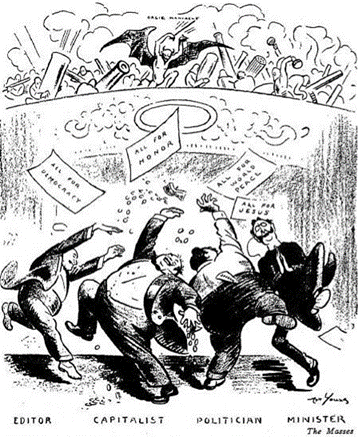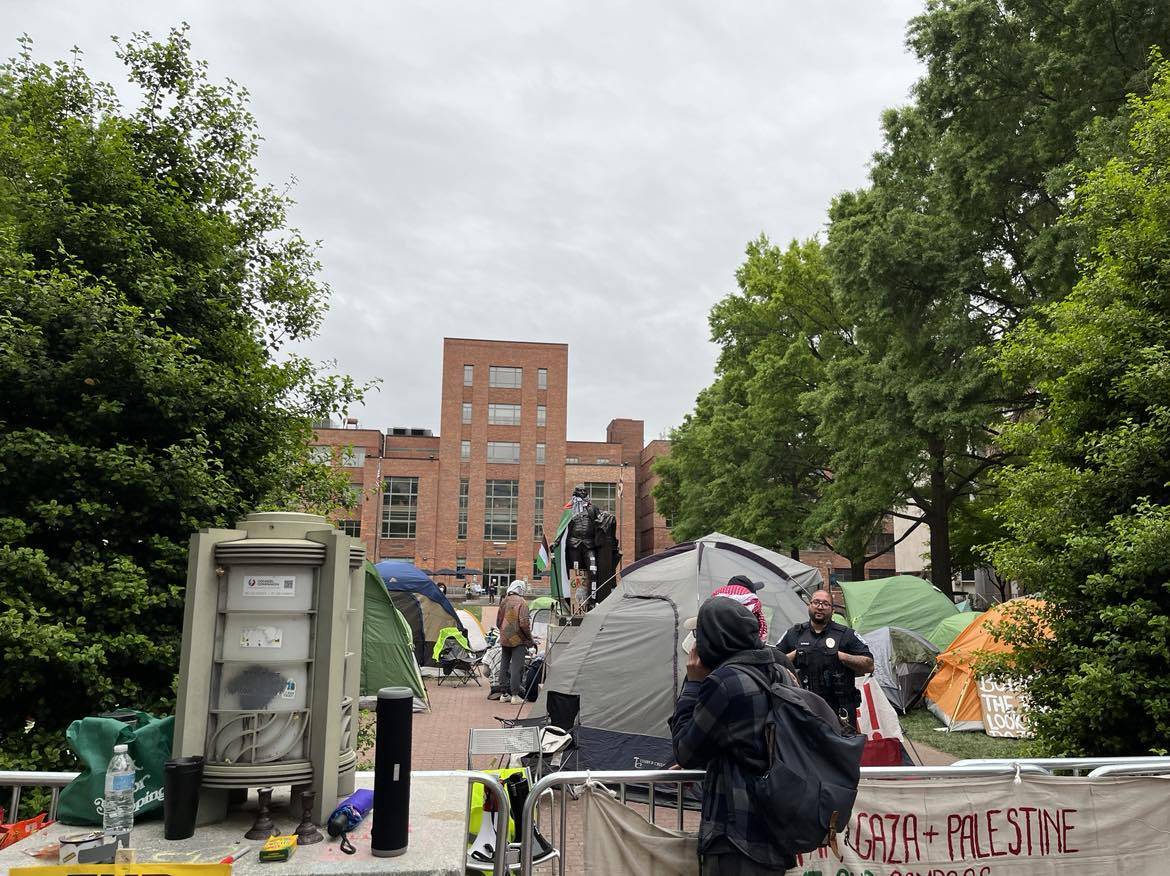My Port of Beirut
Lamia Ziadé
Translator: Emma Ramadan
Pluto Press
ISBN: 9780745348124
CW: Graphic descriptions of the aftermath of extreme violence, including in the context of genocide.
I am staring at a watercolour. The soft hues are gentle on my eyes, the blue of the doctor’s scrubs, even the red of the blood that dominates the image.
Like those cardboard shades that dim your vision enough to allow you to look at the sun without averting your eyes, these watercolour renditions of real photographs dilute the impact of the violence and devastation on my senses, and they allow my gaze to linger, it allows me to see. The caption tells me I am looking at the reception desk of the Hospital Hotel-Dieu, one of the few hospitals spared from the explosion in the Port of Beirut on 4th August 2020. I have just been reading about the four hospitals within a kilometre and a half of the explosion that had been utterly pulverised.
The photograph is taken from behind the reception desk, a Worker’s Eye view. On the desk itself, two people lie on their backs, naked but for their pants. Limbs raised stiff in agony. The broad, diluted strokes of the watercolour can’t tell me much about their faces, but I know what I need to know from their eyebrows and the turn of their necks. Expressions of terror made languid through exhaustion. And the blood. Gathering underneath the central guy and pooling on the carpet below where the receptionists once took moments to push their shoes off for comfort on long night shifts.
Most images in My Port of Beirut, written and illustrated by Lamia Ziadé and translated by Emma Ramadan, do not have blood in them. Most are of the “magnificent smiles” of the dead who filled the author’s phone in the aftermath. “Magnificent smiles”. What a beautiful translation.
I am haunted from time to time by a photograph I saw whilst scrolling the Palestinian Anarchist group Fauda’s Telegram channel. A road at night, strewn with twisted materials that used to form buildings. And on the left, facing the traffic if there was any, is the body of what looks like a boy of around 17. His chest is bare, and his left leg is missing, but I can’t see any blood. I started at this photograph for too long. Perhaps because it’s so rare for someone like myself, who lives so close to the manufacture of the weapons responsible, to see a dead body. I wanted to see if they were alive. It was impossible to think that they were. And I stared a little longer.
On the news, the images of the genocide in Palestine (or as they call it, “The War in Gaza”) are in wide shot, and they do not linger. One edit after another, concrete and twisted steel rods, cut, plumes of smoke, cut, people running with stretchers, cut, faces contorted with grief, cut. Words ticker across the screen, succinct enough to avoid the danger of meaning. I cannot distinguish these images from the ones that television showed me in the ’90s and every decade since. Only they are bigger. And flatter. The television seems to tell me that the faces contorted with grief are fixed in their despair and that the owners of these faces exist only in pain. They are war. Before I can contemplate what these faces might have looked like in joy at the birth of this child now lifeless on a plastic stretcher, before I can consider what might have been lost, to see these folk as anything other than Victims of War. Cut.
Lamia Ziadé will not allow me to turn five pages of the Port of Beirut without seeing the “magnificent smiles” of the people who were lost to the explosion. When people treat each other like human beings, what they share in the aftermath of destruction is not so much the spectacle of destruction itself but the vital joy of life that has been ripped away. And over these images, people do not stare helplessly; they do not munch on crisps desensitised; they do not exchange empty and detached political truisms but weep. They weep under the weight of the truth of what has happened.
The tragedy of the Port of Beirut is that the explosion was not an act of war but a fuck-up by feckless people in power over a population who had survived through decades of war. Upon learning about the complete pulverisation of the hospital where Lamia’s sisters were born, we are shown an image of the same hospital, treating patients behind a wall of sandbags.
I am reading this book slowly, in moments where I can be open to what it’s telling me. It’s now two weeks since I wrote the last paragraph, and I turn the page. Two more watercolour renditions of photographs from the blast. An exhausted mother and a doctor looking in awe at a baby born at exactly the moment of the blast. And then, facing them, a nurse holding three tiny babies to her chest, her head crooked, holding the hospital phone between head and shoulder. The text tells me that she is calling her mother to let her know that she’s alive before leaving the demolished hospital to find incubators for the three premature babies. After reading their story, I sob, chest shuddering sobs that take me off-guard.
I’ve been worrying about this review and the pace at which I’m reading this book of tears and hope. But after turning just one more page, I’m a quarter of the way through, and I know how I feel about it. I recommend it.
I check the Fauda Telegram channel again. The only Arabic I know isحلال, so I skip straight to the pictures.
On tarmac, dozens of bodies are trapped in black plastic body bags.
As the genocide rages on in neighbouring Palestine, this gentle book of mourning from a middle class author and illustrator with deep roots in the city of Beirut, of a disaster bourne of the neglect and incompetence of the powerful rather than of that insatiable colonial lust for brutal conquest, brings us away from the spectacle of blood and explosions, away from the predictable loop of politicking bereft of meaning, and back to the ground. Back to the people. I put it down and cry again. Thinking of them.
~ Jugular Malloy
My Port of Beirut can be purchased here.








